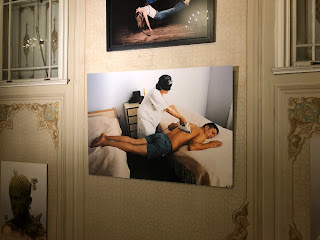The Landscape in Video
Video art, as a narrative form in which moving images come together through fiction or improvisation; is a medium whose scenario, assembly and visual parameters show variations. The venue
of the video also varies in line with the subjects that the artists put in the center. Various subjects such as migration, identity, ecology, social justice, gender equality, and human rights
often rely on a "landscape" behind them. Regardless of where the landscape is, it is the place of memory. The image recorded is the past of the place that is not present or differentiated/transformed and altered. On the other side, landscapes in video art are documentation of socio-cultural analysis and the documentation of cultural topography. Furthermore, climate crisis, diminishing resources, and the need for sustainable climate and nature policies have also activated the artists and video productions have quite increased. In this respect, landscape also represents social and political subjects relating with natural and urban environments within the video.
In the Landscape exhibition in the video, Eight artists coming side by side with the landscapes they include in their production, on the one hand mark “that place” as the background of the moving image and multiply the meaning it adds to the video. On the other side, they leave spectators with questions about geographical, ecological, economic and political existence of those places. What is this place? Are sky, ocean, wall, street, road, home, forest, skyscraper actual address of the thought they represent? Or else, what would remain fixed when time accompanying the landscape flows at its own pace at the places where the artist resides and when that place recreates its own climate and map? Motion picture directs spectator towards the source of issue in its own flow, while motion and change in the landscape attracts the spectator. We get into the bend of the road, get stuck inthe crowd of the street, drown in the silence of the lake, get lost in the mourning of the wall, we can't get out of the heap. The promise of the sky gets mixed with the ocean and that of soil mixes with garbage mass. While each landscape reflects its own political existence on the video, it transmits the perspective of spectator inside with accompaniment of motion and sound (together or separately). Landscape sustained its contact with spectator by means of various forms of narration during history of art. Earth which is presence of all livelihood, becomes place of history and its reflections on landscape in the video. When the movement of the camera coincides with the movement of the landscape itself, it is the place where the artist anchors; at the intersection of history and memory, landscape sometimes oscillates between documentary and fiction, and sometimes it just simply repeats what happened. Landscape is always a place. Camera is what records a place and which transforms it into a motion picture. Sometimes video is a mediator for that place being recorded and sometimes it is
a witness that discloses our form of having relationship with places where we live and our impact on the earth. The landscape in the video suggests us to keep thinking about language, place and identity, history, ecology, road, mountain and stone, sea and sky, in summary live existence as well as
political perspective alive.
Curator: Nazlı Pektas















